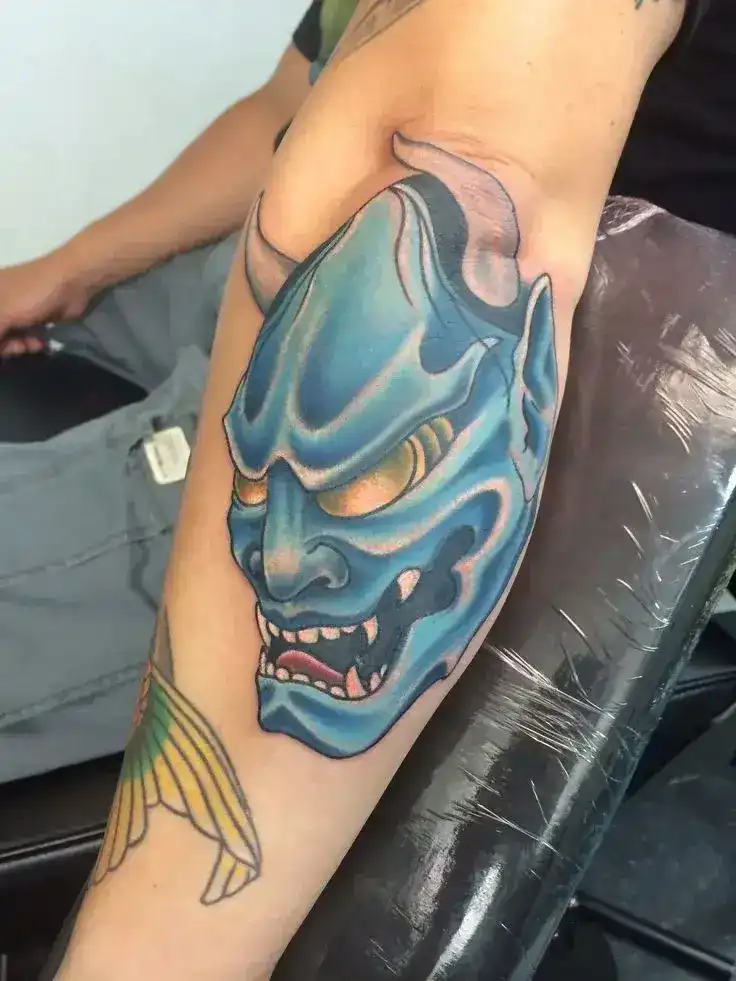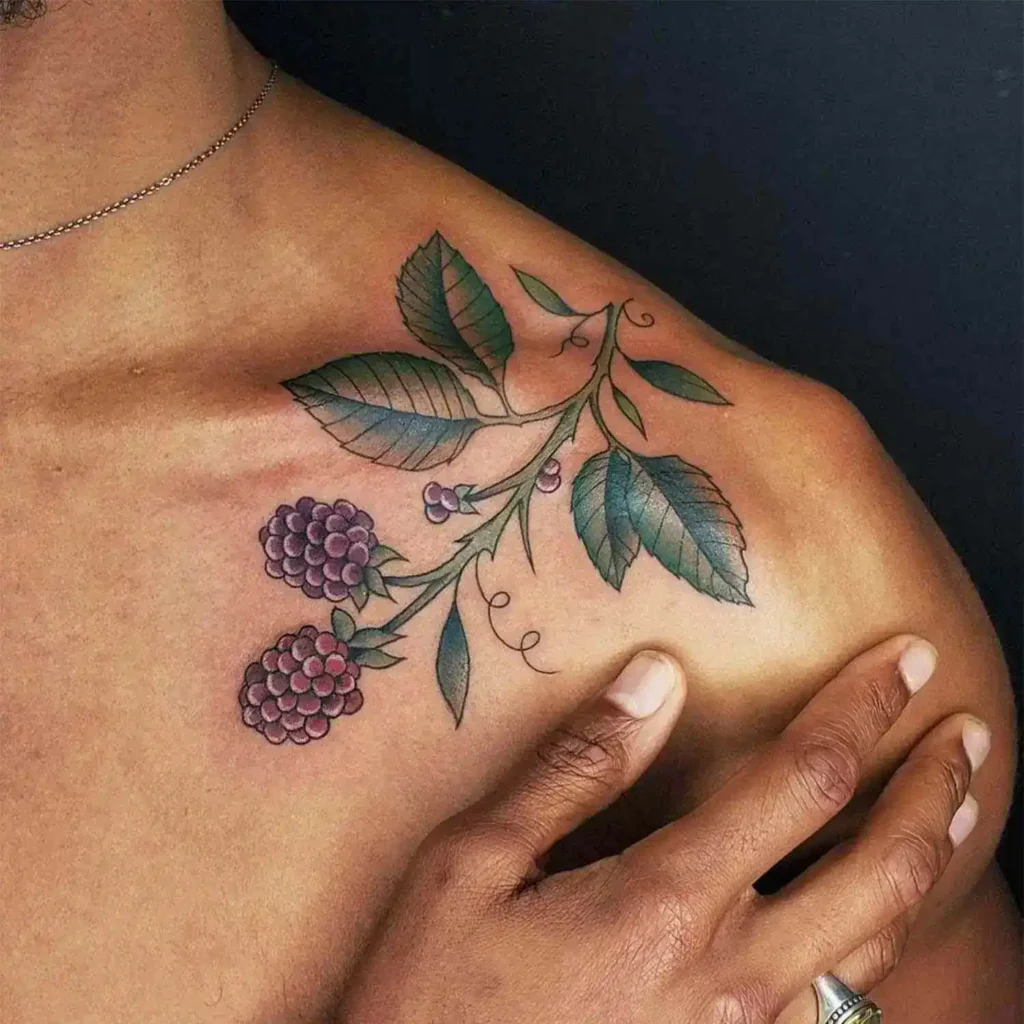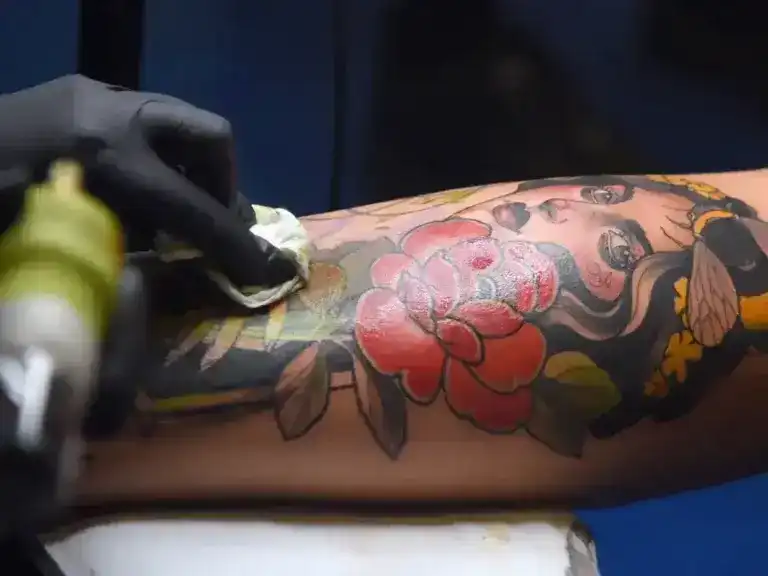When I first decided to get a tattoo, I found myself pondering over the perfect design and its location. The question that kept lingering in my mind was, “are colored tattoos more expensive?”
I weighed the option of a classic black and gray tattoo against one bursting with color. Adding just a few splashes of color seemed to elevate the design to pure awesomeness, but I had to consider my budget.
Opting for colored ink inevitably involves a higher cost. The process is not purely about the aesthetics; it’s about the resources and time the artist invests.
Each hue, from subtle to rainbow brights, requires meticulous mixing and matching.
This level of detail, along with the effort of maintaining the look over the lifespan of the tattoo, adds to its expense.
Upkeep for colored tattoos is a factor to consider. They tend to fade faster than their monochrome counterparts, leading to more frequent touch-ups.
The cost of these touch-ups, combined with the initial expense, can make colored tattoos a significant investment.
Even the placement of the tattoo and your pain tolerance can influence the overall cost.
For instance, a tattoo in a more sensitive area might require more protecting, both during and after the tattooing process.
As an enthusiast, I realized that choosing a colored tattoo is not just a decision based on affordable options but a commitment to its upkeep and care.
It’s a journey of expressing oneself vibrantly, acknowledging the factors that make it a unique art form.
Also Read: Is Laser Tattoo Removal Painful
How Much Color Tattoos Cost?
When exploring the vibrant world of color tattoos, one of the first questions that comes to mind is, “How much do they cost?”
This query is particularly crucial for those considering a small design like an anchor, flower, or any symbol. Typically, such designs might set you back anywhere between $300 and $700.
But it’s not just about the design; the choice of a professional and experienced tattoo artist also plays a pivotal role in determining the price.
Their charges can range from $110 to $180 per hour, depending on their skill level and the complexity of your chosen design.
As someone who appreciates the art of tattooing, I’ve learned that the time spent on crafting these designs significantly affects the final cost.
It’s wise to carry a minimum of $150 to the tattoo parlor to avoid any embarrassment due to a shortage of cash.
Remember, even the smallest tattoos have a base rate. If you’re drawn to more detailed, large, or custom designs, prepare for a heftier bill, potentially reaching up to $7000 for a full-body masterpiece.
Always make a list of professionals, gather quotes, and compare them to find the most feasible option for your budget.
Don’t be hesitant to ask for discounts and deals; sometimes, tattoo artists offer these, especially for extensive or intricate designs.
Also Read: Will Laser Tattoo Removal Damage My Skin? Get The Facts
Why Do Color Tattoos Cost More?
The intriguing question of why color tattoos are pricier than their monochrome counterparts boils down to several key factors.
Firstly, the artist’s charges are often higher due to the increased time and resources needed to prepare and mix a variety of colors.
Unlike a simple black, gray, or red rose design, a color tattoo requiring a spectrum of green, blue, purple, teal, pink, and orange demands not only a diverse palette but also a significant effort in designing and ensuring precise placement.
Every additional hue requires its own ink and needle changes, adding layers of complexity to the tattooing process.
Blending these intricate details is a complicated task, often resulting in a higher hourly fee.
Furthermore, colored ink tattoos have a propensity to fade over time, necessitating more frequent touch-ups, which can impact your long-term budget.
The chain reaction of these factors—resources needing to be replenished, intricate artistic effort, and maintenance considerations—all contribute to the increased cost of color tattoos.
Also Read: Can Laser Tattoo Removal Cause Nerve Damage
Factors That Influence The Cost Of Color Tattoo
The cost of color tattoos is influenced by various factors. Each detail of the design can make the tattoo more expensive.
It’s not just about picking a color; it’s about the complexity and the resources involved.
1. Artist
The choice of an artist is pivotal in determining the cost. Color tattoos require deep study and professional hands.
An experienced artist who works with different inks and designs will have higher charges, typically ranging from $100 to $300 per hour.
They invest countless hours in designing and filling the tattoos with a spectrum of colors, influencing how deep you’ll need to reach into your wallet when you visit the tattoo parlor.
2. Area For Tattoo
Another factor is the body part where the color tattoo is placed. Tattoos on sensitive areas like the neck, fingers, toes, thighs, and buttocks often cost more due to the extra care and precision required.
Choosing a comfortable part of the body for your tattoo might be a more economical option if you’re looking to spend less.
3. Color And Design
The color and design play a vital role in determining the cost of a tattoo.
More detailed and lengthier designs naturally lead to an increase in the amount of filling and number of colors used, which, in turn, affects the price.
A larger design requires more work and ink, thus increasing what you’ll pay the tattoo artist.
Also Read: How To Remove Tattoos At Home With 13 Proven Methods
4. Location Of Tattoo Parlor
Where you get your tattoo also influences the color tattoo costs. Tattoo parlors located in peak and busy cities like California tend to charge more, starting around $300.
Conversely, parlors in less bustling areas, like Arkansas, might start their pricing at $150. The location of the parlor can significantly impact the overall cost.
5. Size
The size of your design is directly proportional to the cost of your color tattoo. It’s crucial to discuss with your tattoo artist how the size of design fits into your budget.
Larger tattoos require more ink and time, thereby increasing the cost.
6. Quality
The quality of a color tattoo plays an essential role in its cost. High-quality, permanent tattoo inks, especially branded ones, are more expensive. This means higher costs for the end product.
When choosing a tattoo parlor, it’s important to opt for one that is registered and licensed, ensuring good quality and safety, which, although may have you paying more, guarantees excellence.
7. Method
The method used for tattooing also affects the cost of color tattoos.
Advanced methods typically cost more than traditional techniques due to the use of specialized tools, needles, and equipment.
These methods offer a range of options, including painless tattooing and both permanent and non-permanent designs, each varying in price.
Also Read: What Are The Long Term Effects Of Tattooing Your Body

Are Color Tattoos More Painful?
A common question about color tattoos is whether they are more painful than their black and gray ink counterparts.
The pain level during the tattooing process isn’t determined by the ink color but by various factors, such as the needle penetrating the skin and creating an open wound.
The consistency of colored inks has evolved with the development of tattoo supplies, leading to a more uniform experience.
In the past, colored inks were thicker, requiring the artist to go over the same spot more times to embed the ink in the dermis – the thickest layer of skin where the ink must last.
This could cause more discomfort, but modern advancements have leveled the playing field in terms of consistency and, consequently, pain.
Also Read: What Tattoo Ink Causes Cancer
How Long Do Color Tattoos Last?
The longevity of color tattoos is a topic of much interest. Unlike black and gray ink tattoos, color tattoos generally fade faster.
This fading process is due to how the skin reacts to the pigment, adapting and producing new skin cells over time.
The rate at which a color tattoo fades can also be influenced by your skin tone.
Typically, lighter colors and white inks, as well as watercolor designs, are more prone to quick fading due to the artist’s technique and the nature of the ink.
Another crucial factor in the durability of color tattoos is their placement. Tattoos in areas like the feet or forearms experience different rates of fading.
Foot tattoos might fade much faster because of friction from shoes or tight clothing, especially in a tropical climate where going barefoot is common.
On the other hand, if you’re in construction and wear close-toed shoes regularly, that too can accelerate fading.
Additionally, exposure to direct sunlight can hasten the fading process.
A good preventive measure is applying sunscreen regularly and wearing loose clothing over the tattoo to shield it from both sunlight and friction.
Immediate aftercare is also pivotal in determining how well the tattoo heals. Following the artist’s instructions for aftercare diligently can lead to minimal fading.
Many tattoo artists offer a free touch-up within a certain time frame after you’ve received your initial tattoo, acknowledging the inevitability of some fading.
Also Read: Can Tattoos Cause Health Problems
Are There Certain Colors To Avoid?
When it comes to choosing colors for a tattoo, it’s worth considering which ones to avoid.
Lighter colors and watercolor designs often fade more quickly, making them less ideal for those on a tight budget or with limited patience and pain tolerance for frequent touch-ups.
It’s a gamble of sorts; taking chances with darker colors, like deep dark purple or rich red, might be more prudent.
These hues tend to last longer than pastel colors and white, which can fade faster and lose details over time.
Typically, artists use white to enhance the details of darker tattoos, but even these can fade, though they are not usually the primary focus of the design.
Are Color Tattoos Worth It?
Deciding whether color tattoos are worth the investment boils down to personal passion and personality.
For many, these vibrant artworks significantly enhance their body, making them more appealing and reflecting their individuality.
Choosing the right artist and the right design is crucial, as a well-done color tattoo can be a remarkable investment.
They not only stand out as cool and trendy but can also serve as cover-up for previous tattoos.
The key is in maintaining the tattoo properly to outshine and uphold its beauty over time.
Those who love this art form understand the value and often don’t mind paying the higher costs associated with color tattoos, including potential fixes and re-touches.
It’s a commitment to maintaining the body art, acknowledging that while more expensive, the outcome can be immensely rewarding, both as a form of self-expression and as a testament to the tattoo artist’s skill and artwork.
Also Read: What Is Considered Heavily Tattooed

FAQs About Are Colored Tattoos More Expensive
1. Do Tattoos With Color Fade?
Do tattoos with color fade more quickly than their monochromatic counterparts? Indeed, tattoos with lighter inks like yellows, reds, oranges, whites, and pastel tones tend to fade faster than those with darker inks. This is particularly true for watercolor tattoos, which are lightly colored and have a fine texture. Even white inks and some pastel inks may only maintain their vibrancy for about five years before they start to fade.
2. Are Colored Tattoos Safe?
When considering Are colored tattoos safe, it’s important to note that tattoo ink colors are not regulated by the FDA. However, significant progress in the production and safety of these inks has been made. Despite this, allergic reactions can occur, especially with certain red inks and neon inks that contain potentially dangerous chemicals and metals.
3. What Is The Most Expensive Tattoo Ink Color?
In the realm of tattooing, white ink and UV ink stand out as the most expensive. This is due to the specialized skills required to execute these styles effectively. Tattoo artists who specialize in these techniques often charge a premium, reflecting their expertise and the unique style they bring to each customer.
4. Is Color Ink More Expensive Than Black Tattoo?
Is color ink more expensive than black tattoo? The answer is yes. Colored tattoos generally cost more than those using only black and grey ink. This is because colored inks are more costly to buy and replace. Artists may price the tattoo higher to account for the additional time and effort required to change and mix colors during the tattooing process.
5. Does Adding Color To A Tattoo Make It More Expensive?
Indeed, adding color to a tattoo does make it more expensive. The use of additional ink and the likelihood of needing more touch-ups contribute to an increased overall cost. It’s essential to discuss pricing with the tattoo artist or shop before proceeding, as this can significantly affect the total expense.
6. Do Coloured Tattoos Last Long?
The longevity of coloured tattoos can vary. Heavily deposited ink in a color tattoo can maintain its color and placement for decades. However, more abstract designs like feather ink, watercolor, fine line, and white ink feather tattoos are more susceptible to fading and may require touch-ups or redos after 5-7 years.
7. What Are The Disadvantages Of Tattoo Color?
One of the main disadvantages of tattoo color is their propensity to fade under sunlight. As colored tattoos age, they require regular touch-ups to keep them looking sharp and fresh. This ongoing maintenance can be a consideration for those looking at getting a colorful tattoo.
8. Do Colorful Tattoos Fade Faster?
Do colorful tattoos fade faster than their simpler counterparts? Yes, tattoos with lighter inks such as yellows, reds, oranges, whites, and pastel tones generally fade quicker than those with darker inks. This fading is notably pronounced in white inks and pastel inks, with some struggling to last more than five years without significant fading.
Final Thoughts
In conclusion, the question “are colored tattoos more expensive” can be affirmatively answered.
The intricacy involved in creating color tattoos makes them more expensive compared to traditional black and gray designs.
The additional time, resources, and expertise needed to include colors, mix inks, and switch needles contribute significantly to the initial cost.
Moreover, the ongoing care and necessity for touch-ups to keep the tattoo looking stellar over time add to the overall expense.
While they demand a higher investment, both in terms of money and maintenance, the unique beauty and personal expression they offer often justify the cost for many tattoo enthusiasts.
